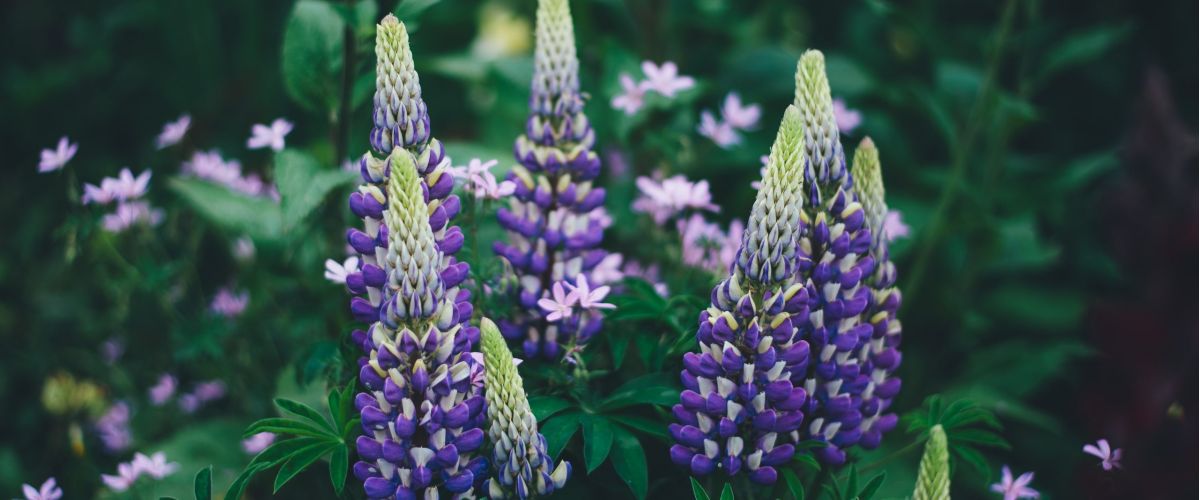Perennials

Unlike annuals, perennials are durable plants that come back year after year. There are thousands of species that can be used for all types of purposes. They come in all shapes and colors.
Perennials have different blooming times. Therefore, you can play around with your landscaping by choosing perennials that bloom at different times in order to have flowers all summer long.
Perennials can be grown alone or with annuals in your flower beds.
Planting
Timing
Perennials are usually planted in the spring or summer. Wait until the soil has completely thawed. Try not to plant them too late in the fall so that they have time to establish roots before the frost.
Exposure
Exposure of the plant will vary depending on the variety chosen. There is truly something for everyone. Whether your arrangements are in the sun or in the shade, you will find plants of various colors that can be grown in all types of environments.
When you come to our store, you will see that the exposure is well indicated on the posters of each plant, which will help you create your arrangements.
Soil
The soil required for perennials is the same as for annuals in flower beds. The soil should be about 20 cm (8 in.) thick. The thicker the soil, the less often you will have to water. Adjustments should be made according to the type of plant chosen. A good thickness of soil also favors the growth of plants that will have enough space to grow their roots. You will then have stronger plants. The Mix 3 soil from Isabelle is ideal for your flower beds. It is a pre-mixed potting soil that retains water. It is specially designed for flower beds. You won’t have to make your own mix and you will be sure to give your plants the best.
Be careful with the location you choose, as some perennials prefer well-drained soil and others will prefer a moister soil. This information is well indicated in our store or is easily available on the internet.
Watering
Directly after planting, the perennial will need to be watered often. You must water the plant in depth in order to soak the soil. This will help it to take root. After a few weeks, watering should be spaced out more and more and eventually rain should be enough. However, it is important to be aware of periods of drought or hot weather during which watering may be required.
The amount of water required may vary depending on the plant chosen. It is important to ask about this when purchasing.
Fertilization
Perennials require little or no fertilization during the season. Just be sure to add good compost at the beginning of each season. A good amount should be added at the base of the plant. Any type of animal or marine compost will do.
Plant pruning
Some plants will require more maintenance than others. You can also sometimes prune them for aesthetic reasons. It is important to get the right information when you buy a plant, because the level of maintenance and pruning required can vary.
Preparation for winter
When buying a perennial, it is important to pay attention to its hardiness. Hardiness is the ability of a plant to withstand the rigors of winter. The Canadian territory is classified in nine hardiness zones that go from 0 to 8. The higher numbers correspond to the places where the winter is mildest. Each zone is divided in two classes, “a” and “b”. Class “a” is slightly colder than “b”.
The zone level varies for each region of Quebec. It is therefore important to find out about your region before purchasing perennials to ensure that they will withstand the temperatures observed there. This information is available on the internet (http://quebec-horticole.ca/zones-rusticite.php).
« Exemple : la ville de Québec est zonée 5a, ce qui veut dire que l’on peut y cultiver toutes les plantes de zone 5a, de zone 4 (a et b), de zone 3 (a et b), de zone 2 (a et b) et de zone 1 (a et b). »
It is important to know that the preparation of your plants before winter will be influenced by their hardiness. The most resistant ones will not need any protection. Ideally, plants should not be cut or should be cut very little in the fall because their stems and leaves serve as protection. They should only be cut in the spring to leave space for new growth.
If your plants are more fragile or if you have chosen zoning outside or on the edge of what is recommended for your area, the purchase of winter protection cones may be required.
Fall leaves and winter snow can also serve as good natural protection. You can bury your perennials with these to create a good insulating layer. However, it is recommended to wait until the temperatures are cold or even freezing before doing so.
In the spring
In the spring, wait until the ground has thawed before doing anything. You may or may not want to clean up last year’s leaves from your flower beds. These can decompose and fertilize the soil during the summer, if left in the flower bed.
For perennials, you can remove dead or broken branches. You can also cut the stems lower or higher depending on the plant. This will allow it to grow new shoots. Always adapt to the type of plant you have and do some research in case of doubt before cutting. Not all plants have to be trimmed low or very low.
Finally, we must be careful in the spring because we can sometimes believe that one of our perennials did not survive the winter. However, some varieties like the perennial Hibiscus grow back later in the summer. So don’t worry about it and give the plant the time it needs.
